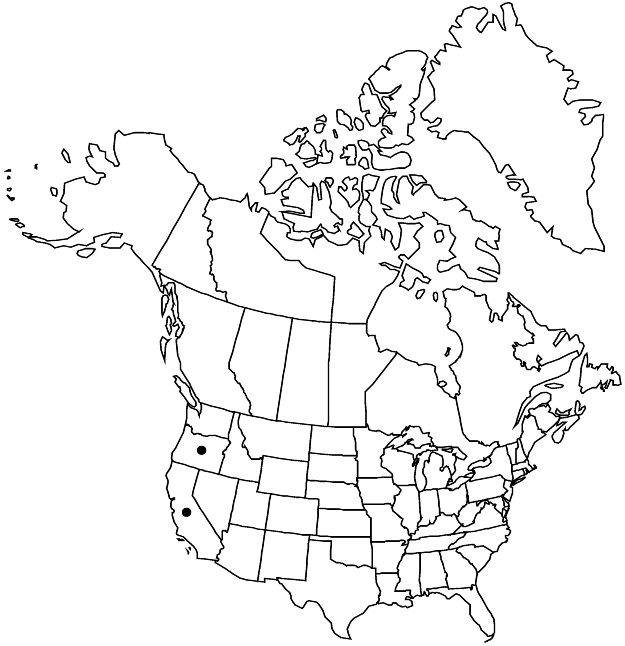Difference between revisions of "Silene hookeri subsp. hookeri"
Common names: Hooker’s Indian pink
Synonyms: Silene hookeri subsp. pulverulenta Silene ingramii M. Peck Silene pulverulenta
Treatment appears in FNA Volume 5. Treatment on page 187.
FNA>Volume Importer |
FNA>Volume Importer |
||
| Line 1: | Line 1: | ||
{{Treatment/ID | {{Treatment/ID | ||
|accepted_name=Silene hookeri subsp. hookeri | |accepted_name=Silene hookeri subsp. hookeri | ||
| − | |accepted_authority= | + | |accepted_authority= |
|publications= | |publications= | ||
|common_names=Hooker’s Indian pink | |common_names=Hooker’s Indian pink | ||
| Line 7: | Line 7: | ||
|synonyms={{Treatment/ID/Synonym | |synonyms={{Treatment/ID/Synonym | ||
|name=Silene hookeri subsp. pulverulenta | |name=Silene hookeri subsp. pulverulenta | ||
| − | |authority= | + | |authority= |
| + | |rank=subspecies | ||
}} {{Treatment/ID/Synonym | }} {{Treatment/ID/Synonym | ||
|name=Silene ingramii | |name=Silene ingramii | ||
|authority=M. Peck | |authority=M. Peck | ||
| + | |rank=species | ||
}} {{Treatment/ID/Synonym | }} {{Treatment/ID/Synonym | ||
|name=Silene pulverulenta | |name=Silene pulverulenta | ||
| − | |authority= | + | |authority= |
| + | |rank=species | ||
}} | }} | ||
|hierarchy=Caryophyllaceae;Caryophyllaceae subfam. Caryophylloideae;Silene;Silene hookeri;Silene hookeri subsp. hookeri | |hierarchy=Caryophyllaceae;Caryophyllaceae subfam. Caryophylloideae;Silene;Silene hookeri;Silene hookeri subsp. hookeri | ||
| Line 29: | Line 32: | ||
|elevation=100-1400 m | |elevation=100-1400 m | ||
|distribution=Calif.;Oreg. | |distribution=Calif.;Oreg. | ||
| − | |discussion=<p>Although < | + | |discussion=<p>Although <i></i>subsp.<i> hookeri</i> normally is eglandular, plants with stipitate-glandular hairs intermixed with the eglandular pubescence occur in several localities. They have been named <i></i>subsp.<i> pulverulenta</i>.</p> |
|tables= | |tables= | ||
|references= | |references= | ||
| Line 38: | Line 41: | ||
-->{{#Taxon: | -->{{#Taxon: | ||
name=Silene hookeri subsp. hookeri | name=Silene hookeri subsp. hookeri | ||
| − | + | |authority= | |
| − | |authority= | ||
|rank=subspecies | |rank=subspecies | ||
|parent rank=species | |parent rank=species | ||
| Line 53: | Line 55: | ||
|publication year= | |publication year= | ||
|special status= | |special status= | ||
| − | |source xml=https://jpend@bitbucket.org/aafc-mbb/fna-data-curation.git/src/ | + | |source xml=https://jpend@bitbucket.org/aafc-mbb/fna-data-curation.git/src/f50eec43f223ca0e34566be0b046453a0960e173/coarse_grained_fna_xml/V5/V5_378.xml |
|subfamily=Caryophyllaceae subfam. Caryophylloideae | |subfamily=Caryophyllaceae subfam. Caryophylloideae | ||
|genus=Silene | |genus=Silene | ||
Revision as of 21:53, 16 December 2019
Plants completely eglandular or with glandular hairs on calyx and pedicels. Petals coral pink or white, limb with 4 unequal lobes or 2 lobes with lateral teeth, lobes lanceolate to broadly oblong, 5–10 mm, appendages 2, linear, 1.5–3.5 mm. 2n = 72.
Phenology: Flowering spring–early summer.
Habitat: Dry, sandy, gravelly, or rocky slopes, grassy areas, open woodlands, coniferous forests, serpentine areas
Elevation: 100-1400 m
Discussion
Although subsp. hookeri normally is eglandular, plants with stipitate-glandular hairs intermixed with the eglandular pubescence occur in several localities. They have been named subsp. pulverulenta.
Selected References
None.
Lower Taxa
None.
